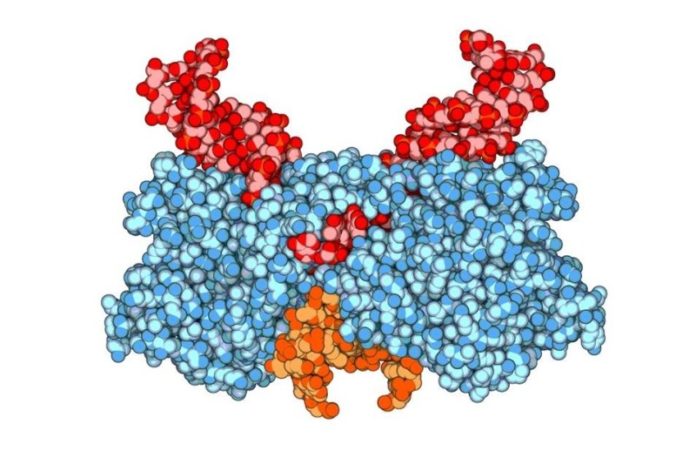
The human immunodeficiency virus (HIV) can insert itself at different locations in the DNA of its human host — and this specific integration site determines how quickly the disease progresses, report researchers at KU Leuven’s Laboratory for Molecular Virology and Gene Therapy. Their study was published online today in the journal Cell Host & Microbe.
When HIV enters the bloodstream, virus particles bind to and invade human immune cells. HIV then reprogrammes the hijacked cell to make new HIV particles.
The HIV protein integrase plays a key role in this process: it recognises a short segment in the DNA of its host and catalyzes the process by which viral DNA is inserted in host DNA.
Integrase can insert viral DNA at various places in human DNA. But how the virus selects its insertion points has puzzled virologists for over 20 years.
Now a team of KU Leuven researchers has discovered that the answer lies in two amino acids. Doctoral researcher Jonas Demeulemeester, first author of the study, explains: “HIV integrase is made up of a chain of more than 200 amino acids folded into a structure. By modelling this structure, we found two positions in the protein that make direct contact with the DNA of the host. These two amino acids determine the integration site. This is not only the case for HIV but also for related animal-borne viruses.”
Viral variants
In a second phase of the study, the researchers were able to manipulate the integration site choice of HIV, explains Professor Rik Gijsbers. “We changed the specific HIV integrase amino acids for those of animal-borne viruses and found that the viral DNA integrated in the host DNA at locations where the animal-borne virus normally would have done so.”
“We also showed that HIV integrases can vary,” says Professor Rik Gijsbers. “Sometimes different amino acids appeared in the two positions we identified. These variant viruses also integrate into the host DNA at a different site than the normal virus does.”
Together with Dr. Thumbi Ndung’u (University of KwaZulu-Natal, Durban, South Africa), the team studied the impact of these viral variants on the progression towards AIDS in a cohort of African HIV patients, continues Professor Zeger Debyser: “To our surprise, we found that the disease progressed more quickly when the integration site was changed. In other words, the variant viruses broke down the immune system more rapidly. This insight both increases our knowledge of the disease and opens new perspectives. By retargeting the integration site to a ‘safer’ part of the host DNA, we hope to eventually develop new therapies.”
Story Source:
The above story is based on materials provided by KU Leuven. Note: Materials may be edited for content and length.
Journal Reference:
- Jonas Demeulemeester, Sofie Vets, Rik Schrijvers, Paradise Madlala, Marc De Maeyer, Jan De Rijck, Thumbi Ndung’u, Zeger Debyser, Rik Gijsbers. HIV-1 Integrase Variants Retarget Viral Integration and Are Associated with Disease Progression in a Chronic Infection Cohort. Cell Host & Microbe, 2014; 16 (5): 651 DOI: 10.1016/j.chom.2014.09.016
